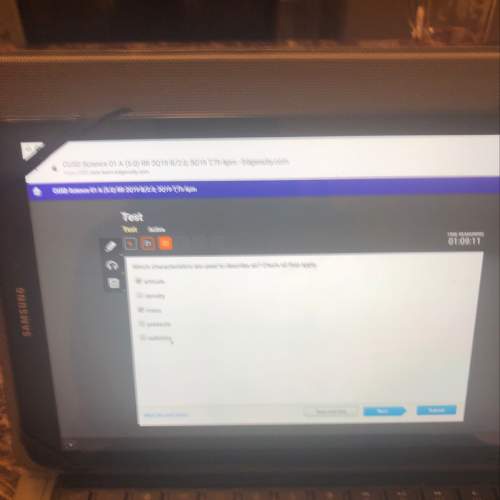
Chemistry, 25.11.2019 19:31 whitethunder05
Compound a (c11h16o) has a band in the ir spectrum at 3450 cm–1 (strong, broad) and does not react with pyridinium chlorochromate (pcc) in ch2cl2. compound a does react with hbr to give compound b (c11h15br). compound b reacts with potassium t-butoxide to give compound c (c11h14). ozonolysis of c followed by treatment with zn and water gives ch3cho and compound d (c9h10o). the proton nmr spectrum of compound d is given below. treatment of compound d with ethyl magnesium bromide yields a. draw the structures of compounds a, b, c, and d. 1h nmr of d: δ 8.1–7.5, multiplet, 5h; 2.85, quartet, 2h; 1.30, triplet, 3h.

Answers: 2


Another question on Chemistry

Chemistry, 22.06.2019 00:00
Select the correct answer. which statement is true about a polarized object? o a. it gains electrons and becomes negatively charged. ob. it gains protons and becomes positively charged. oc. the number of positive and negative charges can be the same. od. it has to be a metal. o e. there is no change in the distribution of the charge in the object. reset next what
Answers: 3

Chemistry, 22.06.2019 04:20
Neils bohr believed that electrons orbited the nucleus in different energy levels, based on strong support from
Answers: 1

Chemistry, 22.06.2019 16:00
How could a student test the effect of removing heat from a gas that is stored in a sealed container? what must occur in order for matter to change states?
Answers: 2

You know the right answer?
Compound a (c11h16o) has a band in the ir spectrum at 3450 cm–1 (strong, broad) and does not react w...
Questions


Mathematics, 12.11.2020 18:50

Health, 12.11.2020 18:50




Spanish, 12.11.2020 18:50


History, 12.11.2020 18:50

Law, 12.11.2020 18:50






Mathematics, 12.11.2020 18:50

Biology, 12.11.2020 18:50


Spanish, 12.11.2020 18:50





